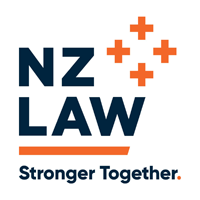Your Resources
Buying into a retirement village
Buying a unit or apartment in a retirement village is a unique and complex process, distinct from purchasing a traditional house. These communities vary widely in terms of accommodation, support, management, and financial structures.
After selecting a retirement village, generally an "Occupation Right Agreement" will be offered to the person applying.
This agreement grants the resident the right to live in an apartment or unit within the village and use its shared spaces for their lifetime, until they choose to move or require additional care within the village. However, it is important to note that this agreement does not confer ownership of the apartment or unit structure, or any land.
These Occupation Right Agreements come in various types, each with its own set of provisions, some examples of which are:
- License to occupy - This is the most common type, offering a contractual right to reside in the unit or apartment without actual ownership rights. Typically, the value of the unit cannot be used for borrowing.
- Cross lease - Residents share ownership of the land and have leasehold rights to individual units. These are not very common.
- Unit title - In villages with this structure, the resident owns a specific unit title (title to their apartment). This is becoming less common.
- Lease for life - This lease remains in effect until the departure or passing of the resident.
- Rental units - Certain villages offer rental units, which operate like residential tenancies.
Entry costs
New residents typically pay a capital sum to secure an occupation right agreement for their unit. However, a portion goes toward covering communal facility expenses, management, and long-term maintenance within the first two to five years of the occupancy.
This portion is commonly referred to as the "deferred management fee" and is deducted upon departure. Often these fees are capped at 20%- 30% of the total fees.
Costs throughout the occupation period
While residing in the Village, the resident is responsible for weekly fees, encompassing Village expenses such as rates, insurance, and operational costs, along with other services depending on the individual offer.
Additional expenses like internet, power and contents insurance are typically the resident’s responsibility.
Exit costs
The occupancy can be terminated by providing notice to the village, depending on the agreement's terms.
Upon termination, the resident will receive the original capital sum, minus deductions such as:
- The deferred management fee (if the resident leaves the village within 2-5 years, they will not necessarily lose the whole 20-30% as it will only be applied for the years they live there. It also is capped in some cases, as mentioned above);
- Any administration, sales, or legal fees that were agreed to be deducted;
- Unpaid service fees;
- Removal of alterations made because of disability;
- Ongoing weekly fees (these must reduce by a minimum of 50% after six months); and
- Expenses for refurbishment or repairs.
It is important to remember that these deductions typically result in receiving less money than the initial capital sum paid for entry.
Even if the unit is sold for more than the purchase price, it is very important to be aware that residents usually do not share in any capital gains during their occupancy.
In New Zealand, capital gains (or losses) upon the re-sale of a property within a retirement village are generally received by the operator, who also usually controls the sale of the unit.
Detailed information can be found in the disclosure statement, which varies depending on your chosen retirement village.
It is required as part of the process that anyone looking to buy a unit or apartment in a retirement village consults a lawyer to review, and provide them with advice about, their specific agreement to make sure they understand what they are signing up for.








 Top
Top